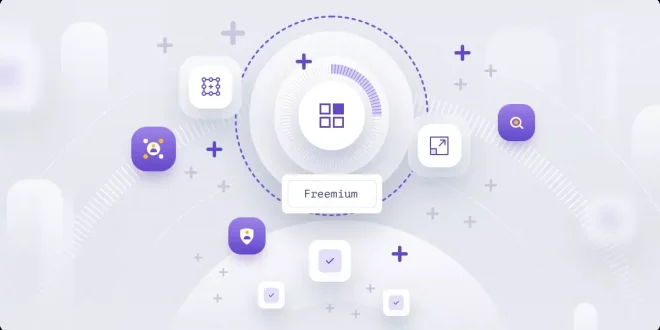With the mobile app industry projected to reach $407.31 billion in value by 2026, now is the time to tap into this market. You have to think carefully about monetizing the app you just developed.
For long-term success, your app monetisation strategy needs to balance user experience and revenue generation. Direct advertising won’t work since it distracts users and can lead to a loss of interest and low engagement.
The Freemium monetisation model is one of the popular user-friendly ways to earn money from an app. Here’s everything you need to know about this model:
The Freemium Model: An Overview
The word “Freemium” is a combination of the words “Free” and “Premium.” When you implement it on your app, it means that the app’s basic features are free. To unlock the premium and proprietary features, users will have to pay a certain fee.
In the modern world, free offerings instantly attract users. The Freemium model works the same way. But once it attracts, engages and entices users, it compels them to upgrade to the premium experience.
Freemium Restrictions That You Can Set on the App
Your service or product will determine the type of Freemium pricing tiers or restrictions to use. Here’s a breakdown of some of the common restrictions:
A restriction based on features allows users to access only the basic features. If they want more, the app will prompt them to subscribe for exclusive content or pay for the premium features.
You can design the app via an app builder like builder.ai and set restrictions on the amount of time users spend on the full version. In this case, the full version of the app allows them to try out the premium features. Once the free trial period ends, they can either return to the basic version or pay to continue enjoying the full version.
A restriction based on the number of uses gives users access to all app features. However, they can only enjoy this benefit a limited number of times.
Though rare, a restriction based on the customer type can help generate revenue. It needs the users to verify their accounts to access certain app features. One of the Freemium app examples is Autodesk which offers free services to students and requires everyone else to pay.
Creating a separate version (a sister app) of the app that is premium can also work. You will have two apps offering different types of features.
Lastly, you can give users a discounted or free version of the app to help familiarize themselves with its features. This way, they can decide whether buying an upgrade or subscribing is a good idea.
How to Reach Your Goals with Freemium
The Freemium monetisation strategy requires you to think creatively for the app’s continued success. Use these tips to reach your goals:
- Tap into an underserved market
- Use the free features to market the app
- Set up referral initiatives for free users
- Ensure the customer knows the perks of paying for the premium features
- Track your numbers
Ready to Implement an App Monetisation Strategy?
The Freemium app monetisation strategy comes with several benefits. You have to set a restriction that reflects your offerings and the users.
 HammBurg Be informed with latest news, reviews, entertainment, lifestyle tips, and much more.
HammBurg Be informed with latest news, reviews, entertainment, lifestyle tips, and much more.




